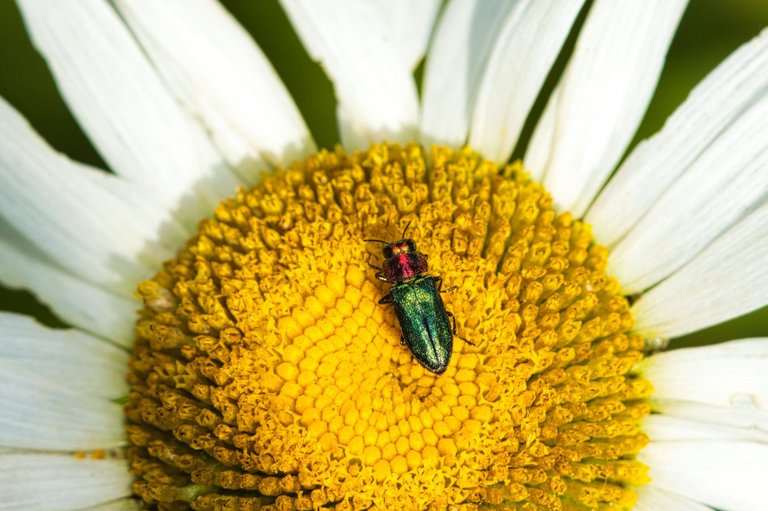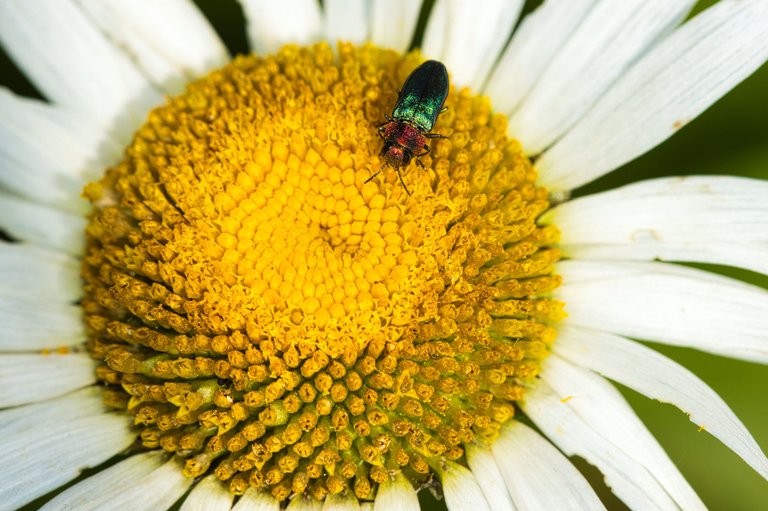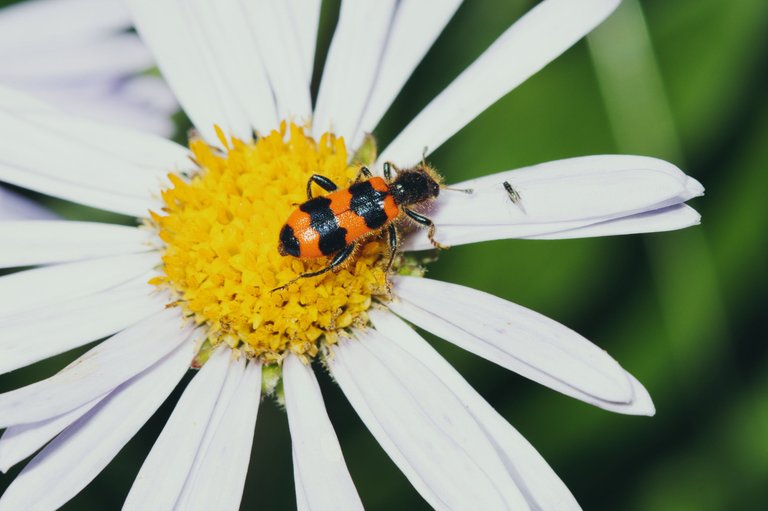| Ці червоні жучки (так, насправді вони червоні, я захотів чогось цікавого і трохи перекрутив з кольорами, вибачте, але на відео це їх справжній колір) — строкатка бджолина, виявилися досить небезпечними. Вони часто привертають увагу своїм барвистим забарвленням та активністю. Однак за їхньою привабливою зовнішністю ховається загроза для бджолиних колоній. Личинки Trichodes apiarius проникають у вулики і паразитують на бджолах, харчуючись їхніми личинками та лялечками. Це призводить до зменшення популяції корисних запилювачів, що, у свою чергу, може негативно вплинути на запилення квітів та врожайність садів і полів. Дорослі жуки також полюбляють відвідувати квіткові рослини, де можуть завдавати шкоди бджолиним сім'ям. | These red bugs (yes, they are actually red, I wanted something interesting and a little twisted with the colors, sorry, but in the video it is their true color) - a variegated bee, turned out to be quite dangerous. They often attract attention with their colorful coloring and activity. However, their attractive appearance hides a threat to bee colonies. Trichodes apiarius larvae penetrate the hives and parasitize bees, feeding on their larvae and pupae. This leads to a decrease in the population of beneficial pollinators, which, in turn, can negatively affect the pollination of flowers and the productivity of gardens and fields. Adult beetles also like to visit flowering plants, where they can harm bee colonies. |
 Anthaxia nitidula ssp. signaticollis
Anthaxia nitidula ssp. signaticollis
 Строкатка Бджолина (Trichodes apiarius)
Строкатка Бджолина (Trichodes apiarius)
This post was shared and voted inside the discord by the curators team of Discovery-it in collaboration with Visual Shots community.
Discovery-it is also a Witness, vote for us here
Delegate to us for passive income. Check our 80% fee-back Program
Thank you
!discovery shots
!VSC
@dimascastillo90 has sent VSC to @gidlark
This post was rewarded with 0.1 VSC to support your work.
Join our photography communityVisual Shots
Check here to view or trade VSC Tokens
Be part of our Curation Trail
@dimascastillo90 ha enviado VSC a @gidlark
Éste post fue recompensado con 0.1 VSC para apoyar tu trabajo.
Únete a nuestra comunidad de fotografía Visual Shots
Consulte aquí para ver o intercambiar VSC Tokens
Se parte de nuestro Trail de Curación
Thank you